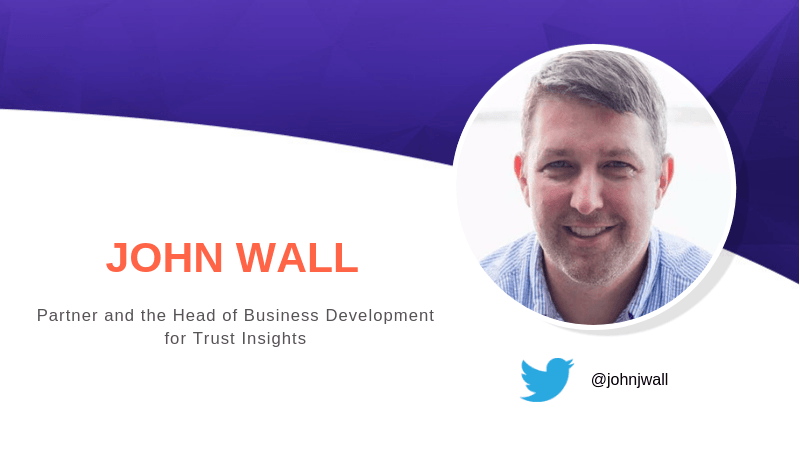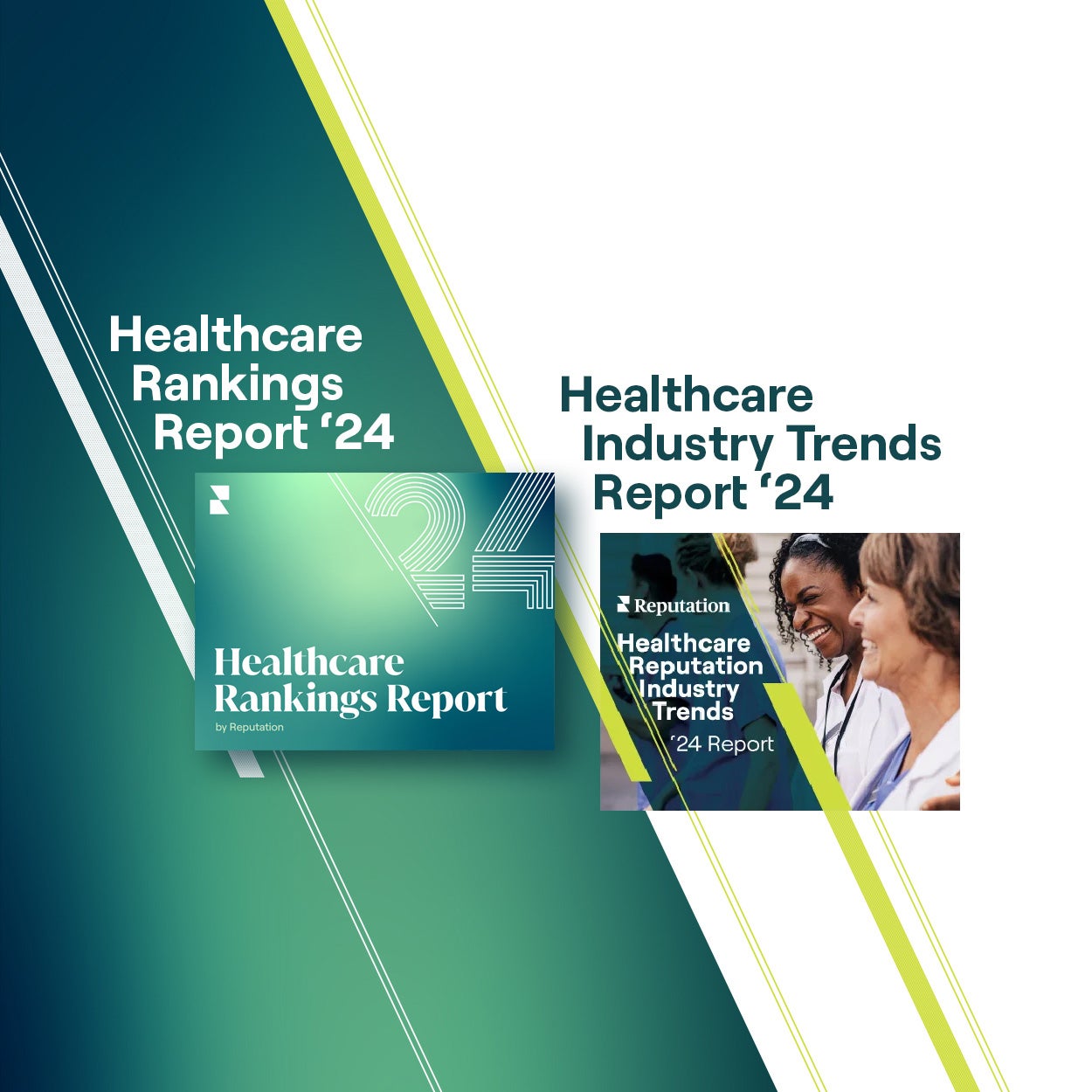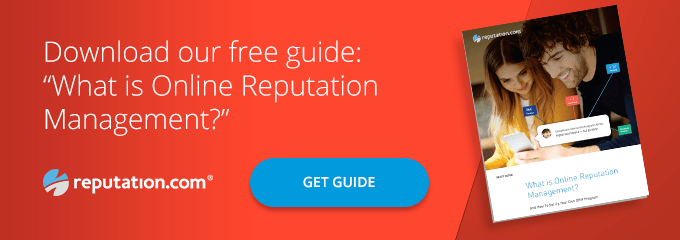Q&A with John Wall on Digital Marketing and Online Reviews
Reputation Staff Writer


John Wall is a partner and the head of business development for Trust Insights, providing clients with data-driven insights into digital marketing. He is also the co-host of the popular weekly podcast Marketing Over Coffee.
In a recent conversation, Wall talked about using predictive algorithms, artificial intelligence and machine learning to give brands valuable, ongoing insights into customers.
This interview has been edited and condensed.
You talk about the intersection of marketing and technology. Has this intersection always been there, or is it something new?
Marketing and technology have always overlapped, but the pace at which technology has changed over the past 20 years is overwhelming and so much faster than anything that’s come before. You literally can spend all your time just trying to keep up with how technology affects marketing.
Say more about this accelerated pace as it relates to marketing.
My sense is that marketers don’t have the luxury of waiting anymore. They need to be fast and responsive both to the technical changes and to leveraging new technology.
The challenge is we never really have a good idea of how a disruptive technology will affect the people who consume media. It may take ten years for it to fully shake out. You have to decide whether to jump on board, or if it’s something that could die within the next year.
What’s your advice when companies come to you about technology adoption?
It depends on the person, what their problem is and what they’re trying to solve. It really does come down to, “Is this somebody who wants to be an innovator, or is it somebody who has some pain today that they need to address?”
What kinds of questions are companies coming to you looking to solve?
A huge topic that we see come up is automation and data. Companies have spent the last five to ten years automating everything. Now they have all the data, but there’s no way to get it together.
Companies create all these reports, but it takes two weeks to get them generated. They have to gather the data from a bunch of different points. Then somebody has to manually massage all the different systems’ output to the point where they can do some analysis. The problem with that process is the data is barely actionable. A sales guy trying to work a deal is not going to wait two weeks for you to come back with some insight as to what they should do next.
We have a lot of customers that are saying, ‘Hey, we’ve got data all over the place, but we’d like to be able to act on it in real time or project it forward. Tell us what’s going to happen in the next six months or a year based on the history we’ve got.’
This seems like an unintended consequence of big data.
Absolutely. Data glut is a problem. Customers have so much data in-house, and they ask us to dig into it and tell them the three most important lessons to get out of it. There are a lot of things in customer complaints or wants that wouldn’t even come up on the radar by looking at a week’s data. But if you take a year’s worth of data and grind through it, you’ll find those insights.
Why turn to you rather than build their own internal analytics departments?
If you want to hire a data scientist for $250,000 a year, you can do that. It’s going to take six to eight months for them to get up to speed; whereas we’ve done eight to ten of these projects over the last six months. We can walk in and, at a fraction of the price, look at everything that’s going on, and give you the five or six things that you need to do next.
We also provide a comparison to publicly available data sources we’ve cleaned up. Now you can look at your customers’ tweets and Facebook posts over the past year and see where the overlap between the general public and your customers is, and then use that information to take action.
You note three technologies that are making a major impact on digital marketing today. Could you take more about predictive algorithms, machine learning and AI?
We haven’t had the computational power to take full advantage of predictive analytics in the past. It’s only now that there’s enough power that we can look at five years of data affordably to give you a good picture of what to expect in the next year. Now you can have a running, 12-months-forward picture. We can mine data sources that we were never able to touch before.
With machine learning and AI, we believe in adversarial networks, where you have one AI looking at a dataset to come up with solutions, and a second AI that processes all those solutions and tests them to see which ones are valid. Humanity has never had the ability to do that kind of data churning.
We have five major categories of machine learning that we’re always leveraging: Text mining, network graphing, clustering, driver analysis and time series forecasting. We have found those to have the best benefit for business.
This is a different approach to content marketing. I would imagine that that helps you differentiate in the marketplace.
A lot of marketing automation has been about collecting as much data as you can and automating as much as you can. On the other side is the academic data science community, which is so far out there that it’s difficult to describe to the layman.
We fall right in the middle. We’re always watching the data science, and we have done all of the marketing automation and reporting. We’re looking for business applications – things that give you a better idea of what’s going to happen in the next year or give you an opportunity to take advantage.
What’s on the horizon?
At the top of the list for us is generative adversarial networks (GANs), the idea that you could have one artificial intelligence cranking out articles, and then have a second AI that does nothing but read and evaluate articles. You’re able to run millions of articles in a few seconds to get the best writing and then trim things up.
The big fear is that it may wipe out social media. You could have these GANs posting thousands of posts every minute to social media, a flood of content that wipes out everything else.
The other thing we’re looking at is identity management and closed social networks, where you’re only hearing from people you trust and have some kind of authority or Reputation Score.
Everybody assumes that artificial intelligence is going to be the Terminator. It comes to life and starts destroying things. What we’re trying to create is KITT from Knight Rider, a computer that has all this knowledge. It’s able to guide you in the right direction and make you thousands of times more powerful than you were before.
Reputation.com helps brands leverage digital tools for better online reputation management. Download our free guide to What is Online Reputation Management?


